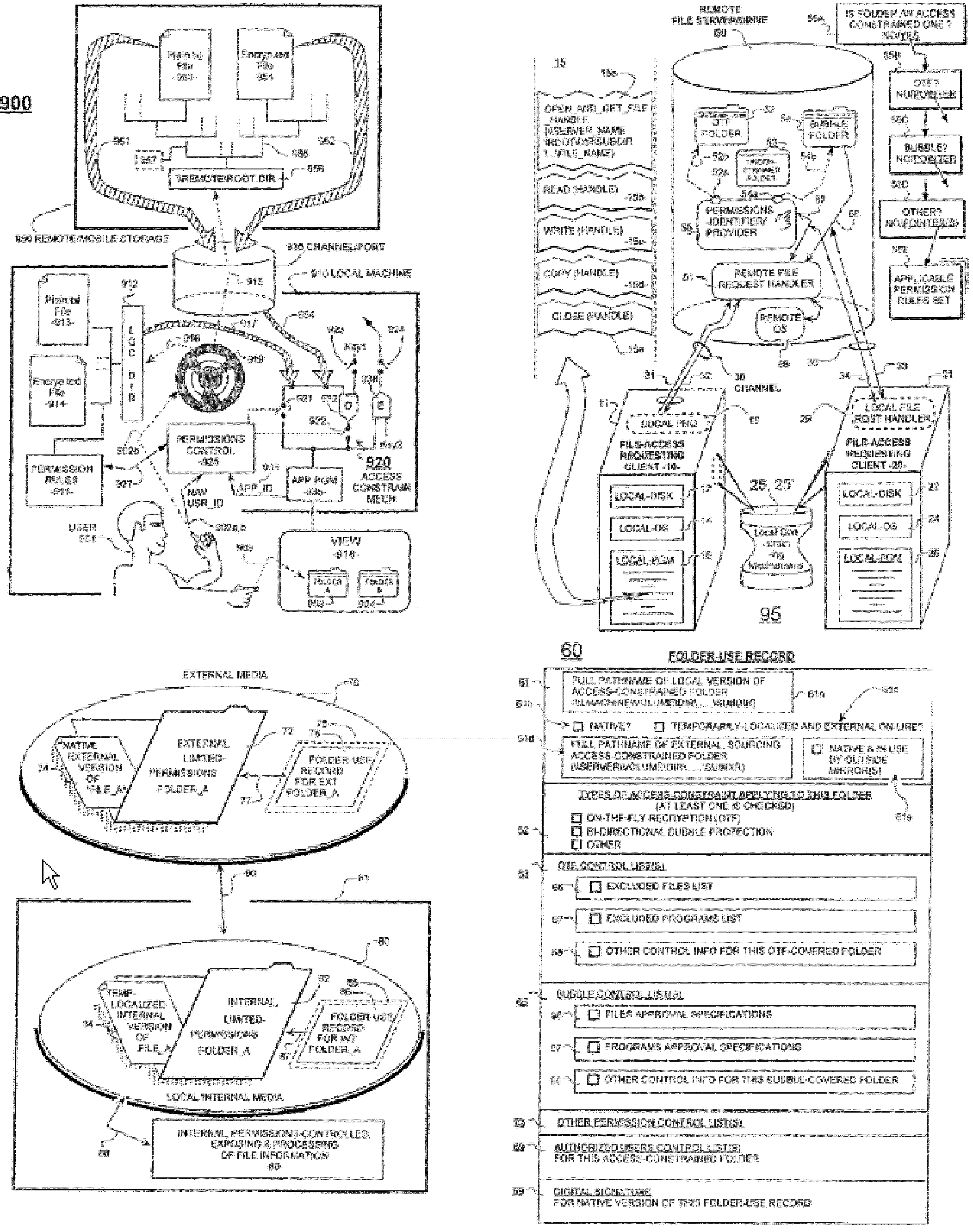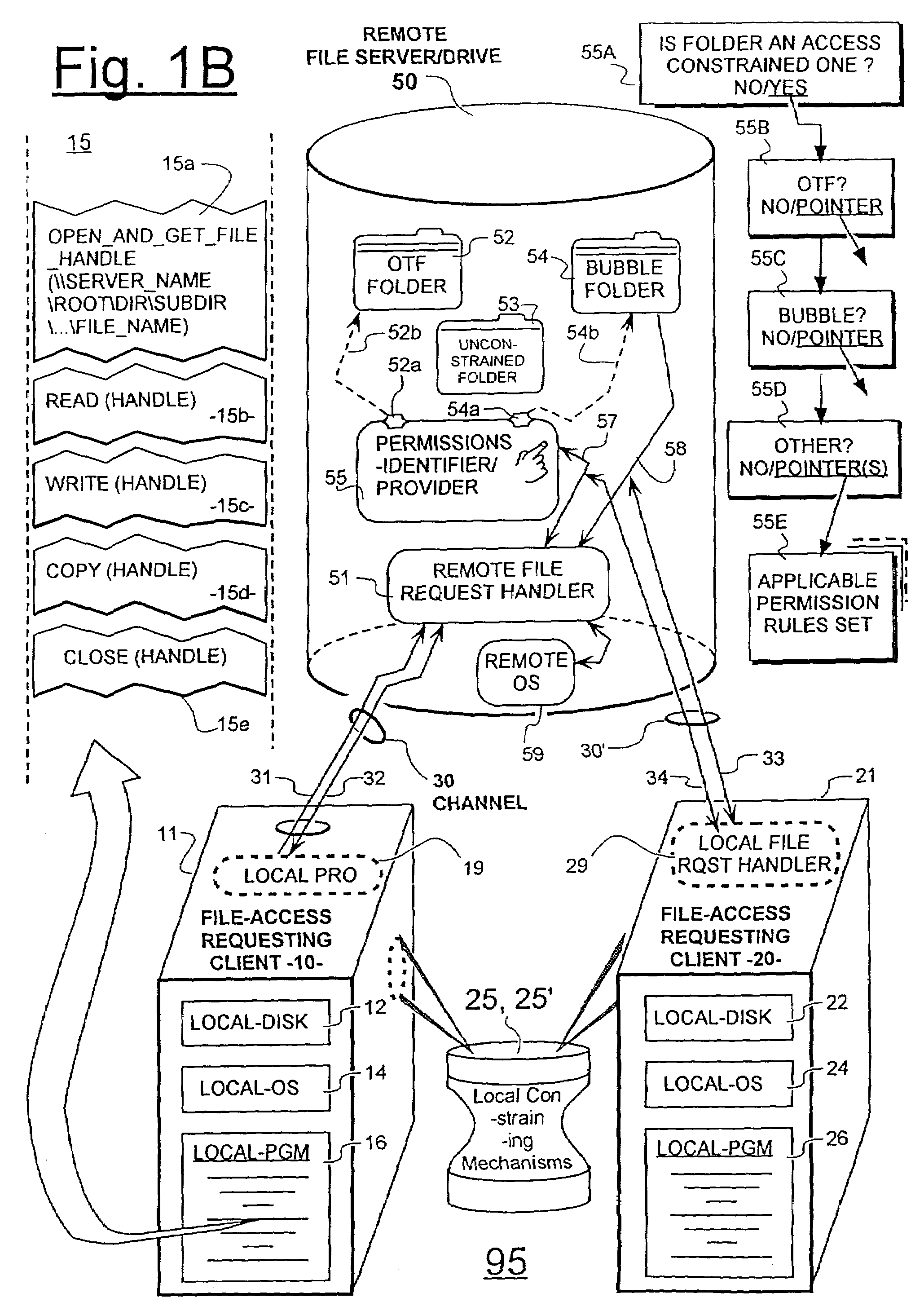Unified permissions control for remotely and locally stored files whose informational content may be protected by smart-locking and/or bubble-protection
a remote and local storage and file technology, applied in the field of storage digital data security, can solve the problems of inadvertent breach of security, unauthorized persons learning how to gain useful (e.g., intelligible) access to confidential information, and increasing danger, so as to reduce the number of transmissions and improve the system response time.
- Summary
- Abstract
- Description
- Claims
- Application Information
AI Technical Summary
Benefits of technology
Problems solved by technology
Method used
Image
Examples
second embodiment
[0220]In an alternate second embodiment, the answer to the query made at step 207, “Is tracking information necessary?” may be, “Yes if Bubble-protection is active on a machine-wide, otherwise No.” Then, if Bubble-protection is determined to be inactive in step 207, control passes along path 207n to step 299 and the intercept 200 is quickly exited while the normal file OPEN process is allowed to continue.
[0221]On the other hand, if Bubble-protection is determined to be active in step 207, control passes along path 207y to step 215. It is assumed that there is a security breach of the Bubble-protection scheme because the remote tracking information is missing and appropriate steps such as 215 and 219 are taken, and also optionally step 218 as will be explained below.
third embodiment
[0222]In an alternate third embodiment, the answer to the query made at step 207, “Is tracking information necessary?” may be made to be programmably variable based on time of day and / or other variables such whether any one or more specific ones of access-constraining algorithms 154 is active. The responses to respective yes and no answers for each such condition may also be programmably mapped to include actions such as simply doing an intercept-exit 299 and / or issuing alert messages (step 218) and / or refusing the file-OPEN request (215) and / or taking other measures as deemed appropriate.
[0223]Within step 206, the local intercept routine 200 optionally determines with respect to the targeted, remote server 50 if an intelligent file-request handler such as 51 is present. If handler 51 is present, the job of trying to fetch the access constraints tracking / managing information (e.g., 52a) corresponding to the to-be-OPENed file is handed off to the remote handler 51. A request of prede...
PUM
 Login to View More
Login to View More Abstract
Description
Claims
Application Information
 Login to View More
Login to View More - R&D
- Intellectual Property
- Life Sciences
- Materials
- Tech Scout
- Unparalleled Data Quality
- Higher Quality Content
- 60% Fewer Hallucinations
Browse by: Latest US Patents, China's latest patents, Technical Efficacy Thesaurus, Application Domain, Technology Topic, Popular Technical Reports.
© 2025 PatSnap. All rights reserved.Legal|Privacy policy|Modern Slavery Act Transparency Statement|Sitemap|About US| Contact US: help@patsnap.com



